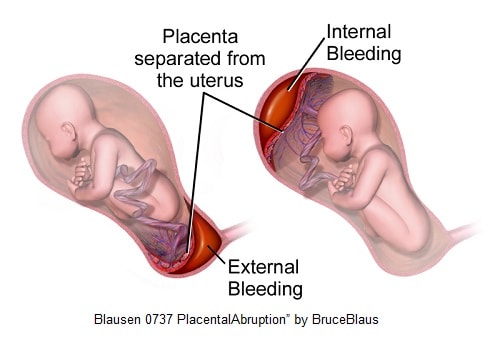A Caesarean section delivery is a surgical procedure used in pregnancy deliveries. During the C-section surgery, the baby is surgically removed through the mother’s abdomen through a surgical incision in the abdomen and uterus. It is a fairly common procedure that is often performed during unexpected problems during the delivery, such as the position of the baby, distress in the baby, or if there is not enough room for the baby to be delivered through the birth canal. C-sections can also be planned in advance, and can occur because of health problems in the mother that can cause complications during vaginal birth for the baby and mother. Although C-sections can come with a variety of complications, it is a relatively safe surgery for the mother and baby and often occurs for a variety of reasons.
Why a C-section?
There are different reasons why a woman might have a C-section delivery. Sometimes they are scheduled ahead of time, and sometimes they are performed due to unexpected complications.
1. More than one baby or a larger sized baby
The mother might schedule a C-section before she even goes into labor if she’s expecting more than one baby or a larger sized baby that might experience serious trauma during a vaginal birth.
2. The baby’s position
If the baby is positioned in a breech or transverse position, the mother will have to deliver through a C-section to ensure that the baby is delivered safely.
3. Previous C-section or invasive uterine surgery
Women who have had prior C-sections or some other kind of invasive uterine surgery are more at risk for their uterus rupturing during a vaginal birth, and therefore a C-section delivery would be a safer way to deliver.
4. Risk of passing viruses
Women who are HIV-positive or whose blood tests towards the end of the pregnancy show a high viral load will endure a C-section delivery to prevent the virus from being passed on to the baby.
C-section deliveries may also occur for emergency reasons that indicate continuing the labor process could be dangerous to the mother or baby. This could include the following situations:
1. Cervix stops dilating
If the cervix stops dilating during labor or the baby is stopped from moving down the birth canal, a C-section may be necessary to deliver the baby.
2. Weak heart rate
If the baby’s heart rate indicates that the baby may not be able to handle labor or induction, a C-section can be performed.
3. The umbilical cord slips through the cervix
In this situation, the baby will need to be delivered through C-section immediately because the cord can prevent the baby from getting enough oxygen.
Despite some of the serious complications that can cause a C-section delivery, women who endure planned C-sections often are relieved of the emotional stress and anxiety of giving birth and are able to comfortably plan their delivery. The typical C-section delivery lasts about 10 minutes or less, followed by 30 minutes of being stitched up. The mothers are given an epidural or spinal block so that the lower half of the body is numbed, and then the baby is delivered via an incision in the abdomen. While C-sections are relatively safe procedures, it is still a major surgery and therefore there can be some complications that can arise.
Some possible complications can include unexpected reactions to the medications or anesthesia used during the surgery, blood loss, and infection. Blood clots are possible in the legs, pelvic organs, and lungs which can be harmful to the mother. The surrounding organs such as the bowel or bladder can be injured during the course of the surgery, and in some cases the lining of the uterus can become inflamed or irritated as a result. The babies can also experience negative effects as a result of C-section deliveries. For instance, babies born by C-section have a higher risk of transient tachypnea which is rapid breathing caused by leftover fluid in the lungs.
Recovery
The recovery after a C-section takes longer than the recovery from a vaginal birth. After a C-section, mothers typically spend around three to four days recovering in the hospital and about four to six weeks of recovery at home. It’s important to reduce high levels of activity to ensure that the incision is not strained or torn. There will also be additional soreness felt in the area of the incision that will be longer lasting than the soreness felt from a vaginal birth. For this reason, it is important for mothers to rest and allow themselves to recover before fully engaging in normal activity and avoiding causing further irritation and pain.



